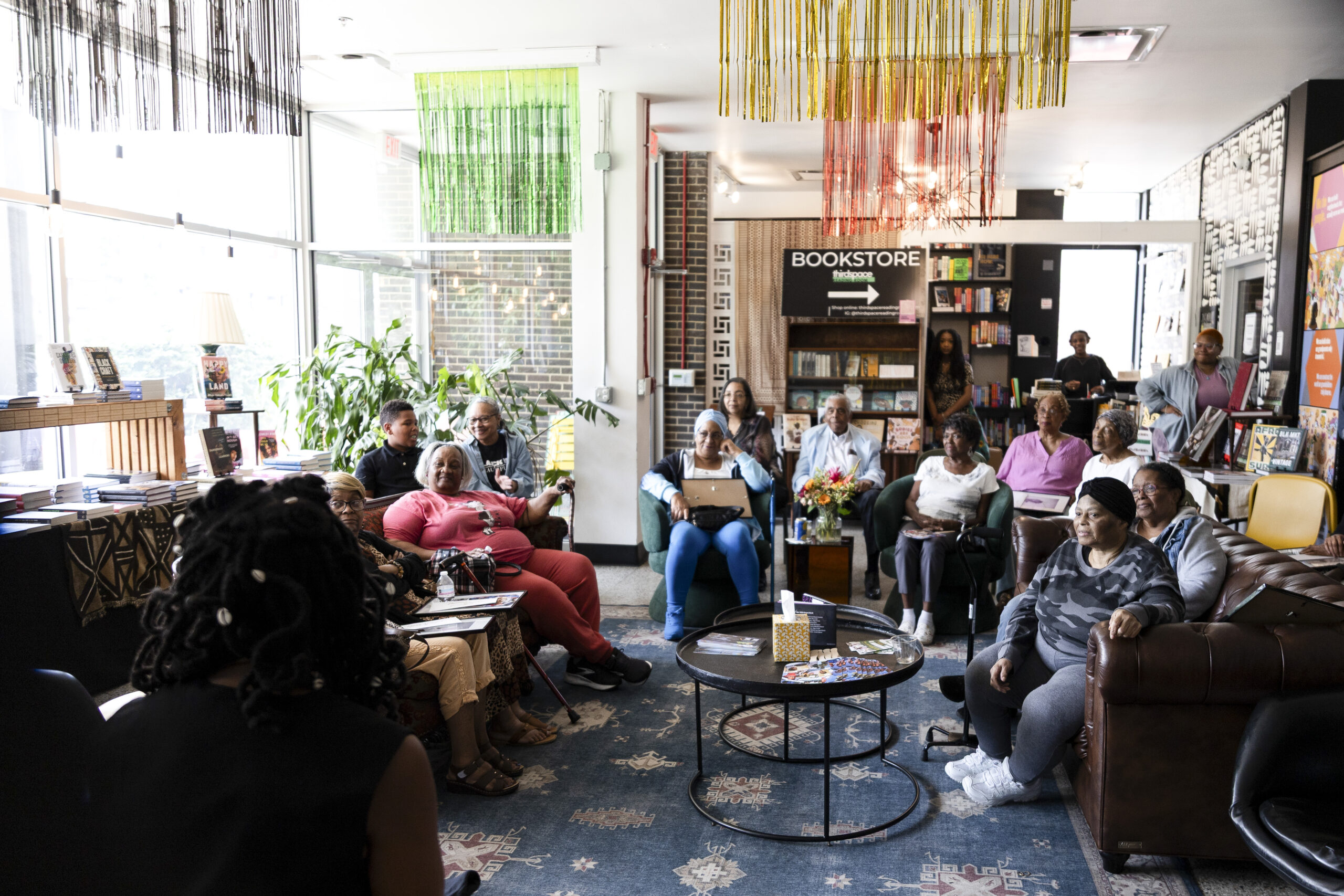
By Kristen Bannerman
CLEVELAND— On Cleveland’s East Side, one organization is holding off gentrification in the Glenville neighborhood by creating programs that center on local residents.
The ThirdSpace Action Lab, 1464 E. 105th St., is working to strengthen the Black community in its neighborhood as the area undergoes revitalization projects. Co-founders Evelyn Burnett and Mordecai Cargill drew on their experience at the Cleveland Neighborhood Progress to start their own community investment studio that educates, supports and values the people they serve.
“We’re a grassroots solution studio that is attempting to apply racial equity and inclusion insights to create the built environment that our people deserve,” Cargill said.
Part of that effort includes preserving the history of East 105th Street with Chocolate City Cleveland, the group’s digital map that documents the street’s former Black businesses.
On July 30, ThirdSpace Action Lab announced that part of their Chocolate City Cleveland initiative has now been made available on the Destination Cleveland app under “Black Cleveland: A Living Legacy.”
Taking visitors on a guided tour, the map found on their website provides photos, videos and brief histories of the establishments. It shows that from the 1800s to late 1900s, East 105th Street was Cleveland’s epicenter for Black entertainment sites, restaurants, churches, recreation facilities, a medical office and more.
The first floor of that medical office is now the headquarters of the ThirdSpace Action Lab and their Reading Room bookstore—the official bookseller for this year’s NABJ convention.
Burnett said this location was “an easy sell once you learn the history and people’s connection to the building.”
The site was erected in 1960 as the Medical Associates Building, a doctor’s office opened by a group of Black medical professionals who experienced discrimination from surrounding healthcare facilities. Adding to the historical relevance, Robert P. Madison, the first African American to earn an architecture degree in Ohio, designed the building.
Today, community members often come by to share their memories of the space.
“There’s not very many days that go by that someone doesn’t walk up, and they’re like, ‘Oh, this used to be my doctor’s office’ or ‘This used to be my dentist’s office,’” Burnett said.
Cargill, a Glenville native, says the changes on East 105th Street are evident in the fluctuating property values of the homes across the street from the ThirdSpace Action Lab.
“They started as big single family homes, then they became duplexes, then they were vacant for a number of years,” he said. “And now they’re selling for $400,000. If you’ve been in this neighborhood for a long time, you’ve seen them at their depths.”
Currently, that same street has seen further changes with the opening of Glenville Circle North, a mixed-income apartment development, and Glenvillage, a retail incubator for small businesses to set up shop and grow their clientele.
Burnett said these kinds of developments help keep the neighborhood intact because they allow space for residents to stay.
“That site is actually a really important example of community development,” Burnett said. “I think the goal is development without displacement. So, that development can be rehab, it can be new construction, but you don’t want to push anybody out. Certainly not the historic residents.”
As East 105th Street and the surrounding area continue to change, ThirdSpace remains focused on keeping the Black story of that street alive.
“Third Space Action Lab is really about preserving that legacy,” Cargill said, “but also turning that into a new development framework, which is asserting that Black space is important, and we should be protecting Black space. And that’s a thing that should connect us. That’s why you come back to the neighborhood because your people have made it what it is.”
Third Space Action Lab established an Intergenerational Lunch, which brings people of all ages together to reflect on what the neighborhood once was and where it is heading.
“Our Intergenerational Lunches are a monthly reason for us to get together,” Cargill said. ”There’s usually some version of a question that’s like, ‘Tell us about the good old days,’ because it’s important for us to remember.”
For this grassroots organization and consulting company, not only is the past important, but also ensuring that locals have a say in what is changing in their neighborhood stands as a priority.
“As a consulting company, we are often tasked with going out and talking to people—asking them, ‘What do you think about this particular project?’ or ‘What do you think about the direction the city is going in?'” Cargill said. “Part of our work is community engagement, but what we are attempting to do is to educate, to empower, to entertain a little bit, but also to put people at the center of all of the changes that are happening.”
For ThirdSpace Action Lab, valuing the engagement of neighborhood locals means ensuring that community members are partners and not just survey data. “It can’t feel like people are being studied,” Burnett said. “It might have to feel like a party. It might have to feel like dinner at your grandma’s house or your auntie’s house. And I think we’ve tried to incorporate that sentiment and sensibility into everything we do, including the intergenerational lunch.”

Be the first to comment